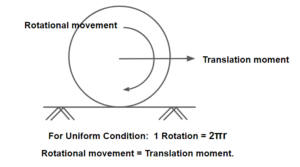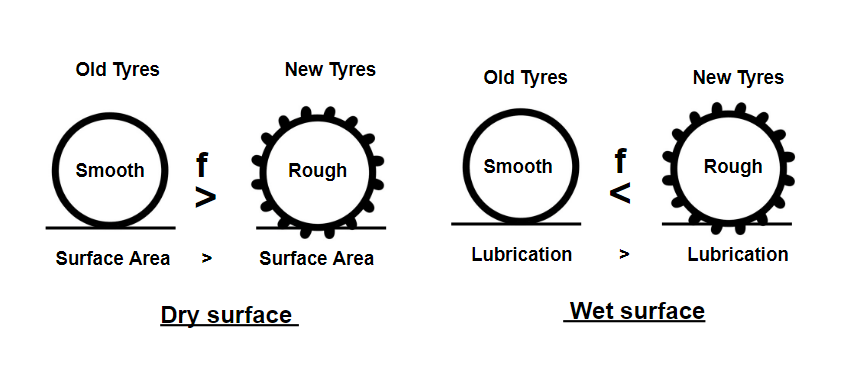Pavement surface characteristic
Pavement surface characteristic depends upon pavement type. Which in turn depends on availability of material, cost, composition of traffic, climate conditions, method of construction available.Pavement surface characteristics include:
Note: This topic is part of the second chapter of Highway Engineering. I suggest reading this topic in the context of the complete chapter: Geometric Design of Highway. If you want to read the entire Highway Engineering, click here: Highway Engineering.
Skid and Slip
Friction
Unevenness Index
Light Reflecting Characteristic
Drainage
(i) Skid and Slip:
Skidding take place when there longitudinal moment of wheel is more then rotational movement during the break(T.M>R.M). To avoid skidding, friction resistance must be greater than the braking force.
For Pure skid, Rotational movement =0, Translation moment ≠0.
Slipping occurs when wheel revolves more than the corresponding longitudinal movement along the roads during acceleration(R.M>T.M). It is generally occurs on pavement surface which is either slippery and wet or when the road surface is with mud.
For Pure slip, Rotational movement ≠0, Translation moment=0.

(ii) Friction:
It decide the operating speed and Minimum distance required for stopping the vehicle.
Maximum friction is developed when break are applied up to complete extent.
Friction also governs rotational transitional moment of the wheel.
It is further classified into two:
Longitudinal friction
Lateral or Transverse friction
(A) Longitudinal friction:
Longitudinal friction help in support movement of vehicle.
Longitudinal friction depends upon speed, For high speed friction is less.
(B) Lateral or Transverse friction:
Lateral friction come in picture only when there is a lateral force on vehicle.

NOTE- As per IRC, coefficient of longitudinal friction lies between 0.35 to 0.40, used in sight distance calculation and confident of lateral fiction is 0.15, used in horizontal curve design.
Friction depends on following factor:
Type of a pavement surface (CC, Bitumen, Earthen material, WBM).
Roughness of the pavement (Texture).
Condition of pavement (Dry, Wet, Rough of Smooth).
Condition of tyres ( New with good threads or old with worm out threads).
Speed of vehicle.
Extent of break application ( Full or Partial).
Load and tyre pressure.
Temperature of tyre and pavement: On the Dry Surface coefficient of friction of old tyre is greater than the new tyre. And on the wet surface coefficient of friction of old tyre is lesser than the new tyre.

Note: Hence new tyre is more dependable in adverse conditions. Examples – Wet surface.
(iii) Unevenness Index:
Presence of undulations on the Pavement surface is called Unevenness.
Unevenness index is defined as cumulative undulation per kilometre road length.
It is expressed in terms of mm/Km.
It is measured by BUMP INTEGRATOR.(Developed by CRRI)
Uneven surface increases riding discomfort, fuel consumption, wear and tear of tyres and other part and accidents.
The different values of Unevenness Index and the corresponding serviceability of road is as follows:

Note- Internationally Roughness is measured in term of IRC ( IRC=INTERNATIONAL ROUGHNESS INDEX).
\(BI=630(IRI)^{1.12}\)
BI = BUMP INTEGRATOR (mm/km)
IRC=INTERNATIONAL ROUGHNESS INDEX (m/km)
Unevenness of the pavement depends upon following factors.
Improper Compaction.
Use of improper construction method.
Use of interior quality material.
Improper surface and sub surface drainage.
Poor maintenance of pavement surface.
(iv) Light Reflecting Characteristic:
Visibility over the pavement surfaces depend upon its color and light characteristics.
The glare cases by the reflection of the headlight is high on wet pavement surface than dry pavement.
Light colored pavement surface give good visibility at night but produce more glare during the day light while on the other hand black too pavement poor visibility in night.

(v) Drainage:
Pavement must be completely impermeable so that seepage of water into the pavement layers does not take place and the geometrical pavement surface should be such that which helps and remains out of the water from the surface quickly.
For Detailed Analysis of Highway Engineering Step By Step.